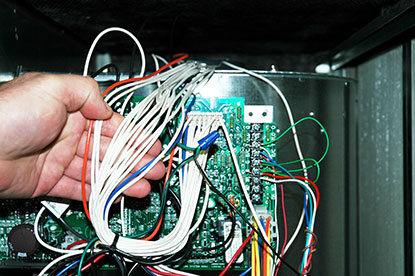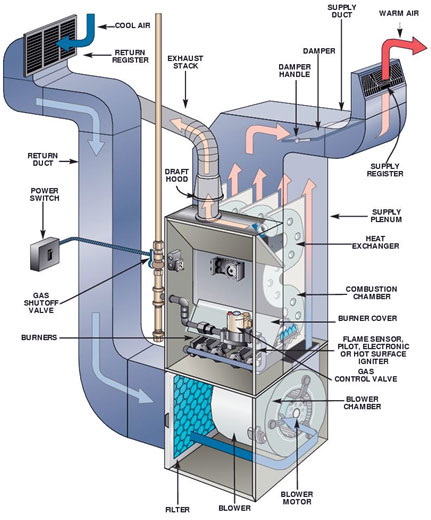Permanent Split Capacitor
Of the two main types of motors for residential furnace applications the PSC or permanent split capacitor is far more popular. It is used on equipment from the lowest grade of furnace to the medium grade of furnaces. This type of motor typically has anywhere from 1 to 5 speeds with most furnaces coming with 4 speeds. The speeds are manual set and switched according to the thermostat or the circuit board or both. more popular. It is used on equipment from the lowest grade of furnace to the medium grade of furnaces. This type of motor typically has anywhere from 1 to 5 speeds with most furnaces coming with 4 speeds. The speeds are manual set and switched according to the thermostat or the circuit board or both.
The Variable Speed Motor
The variable speed motor is not new, but the application on residential furnaces is only a dozen or so years old. The variable speed motor is a three phase AC motor that runs on simulated three phase electricity. The alternating current (AC), wall plug, is converted to 3 legs of electricity that alternate at different times.
Sounds Complicated….why use a three phase motor?
 An alternating current motor, the PSC motor, is a fractional horsepower motor. In order to change the speeds in the motor legs of electricity that are delivered to the nodes on the armature are left off. In other words to lower the speed of the power you lower the horsepower, similar to running a V8 engine on only 6 cylinders. It runs slower because it doesn’t have as much power. An alternating current motor, the PSC motor, is a fractional horsepower motor. In order to change the speeds in the motor legs of electricity that are delivered to the nodes on the armature are left off. In other words to lower the speed of the power you lower the horsepower, similar to running a V8 engine on only 6 cylinders. It runs slower because it doesn’t have as much power.
The three phase motor has full horsepower at every RPM. This allows the motor to work easier and more reliably. The frequency of the electricity changes to control the speed of the motor. We don’t need to get more complicated than that, but this is where it gets interesting.
On a PSC we set the speeds physically by placing wires on terminals. On a variable speed motor we set the circuit board to cubic feet of air per minute. A Ton of air is anywhere from 350 to 450 cfm with the higher the number being used for dryer climates. The circuit board is set up to measure the amperage draw of the motor. It knows that if the three motor is using a certain amount of power it is moving a certain amount of air. The motor then ramps up or down according to the amount of amperage that it is set for.
Airflow from one installation to another varies considerably with the applications of ducting and sheet metal and whether or not a register or two is closed. The alternating current motor (PSC) cannot make up for these changes and has no hope of making “on the fly” changes in rpms like the variable speed can. The variable speed motor delivers a more reliable amount of airflow and this helps to make your air conditioning system more efficient.
Circulating Mode
On a variable speed motor for residential use the circulating mode is generally set at about 500 cubic feet of air per minute. This setting allows air in the home to be thoroughly cleaned and the air being constantly circulated (20 minutes out of every hour - usually) means more even air temperatures throughout the home. This is accomplished for about $5 a month in electricity costs. You can do the same thing with a PSC motor by setting the fan to on at the thermostat, but this will cost about $65 a month in electricity.
|